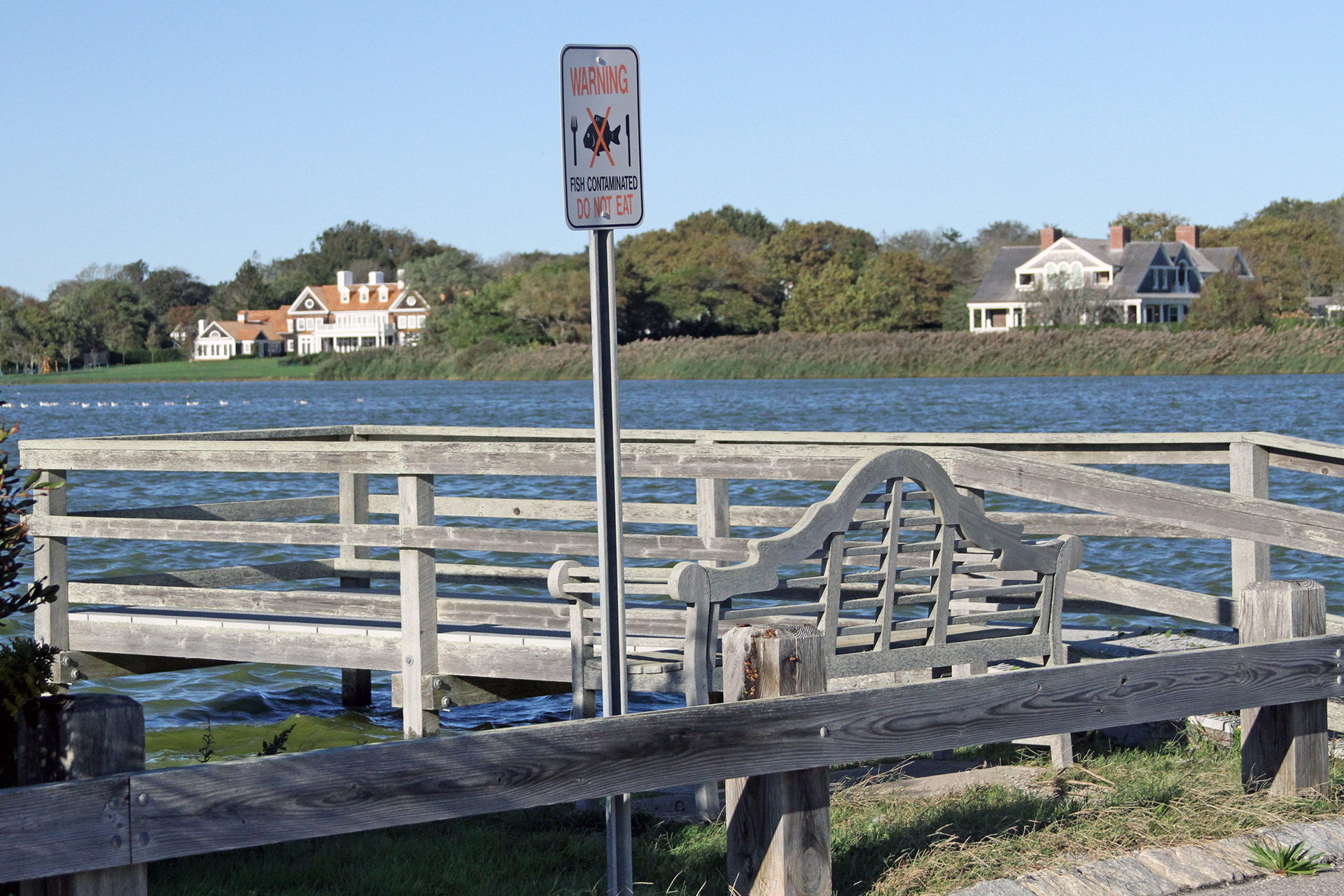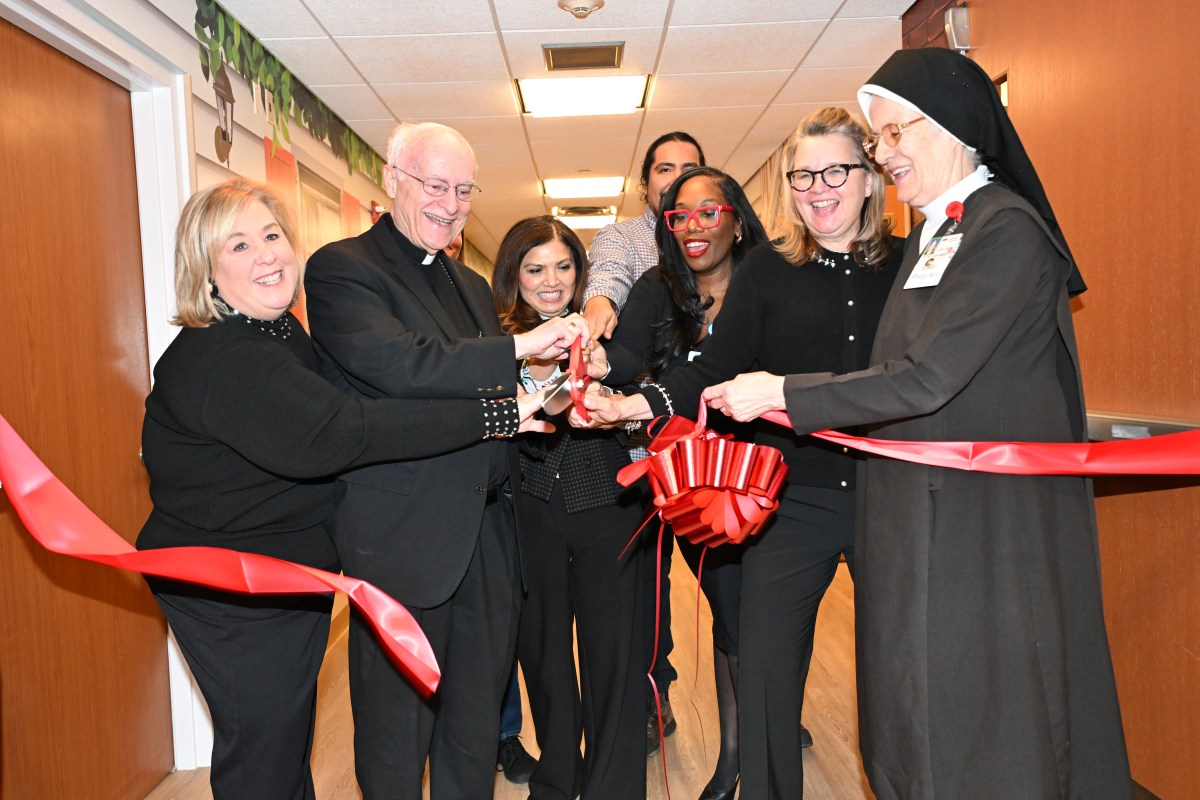Committed To Cleaning Up Lake Agawam


Since the state Department of Environmental Conservation began monitoring hundreds of lakes across New York in 2013, no lake has experienced blue-green algal blooms more frequently than Lake Agawam. Cleaning it up is a complex problem that’s going to take multiple solutions, and a village, literally and metaphorically.
Newly-elected Southampton Village Mayor Jesse Warren announced the formation of a Lake Agawam Conservancy Group at the July 23 board meeting while listening to the public’s complaints about the freshwater body and others near it. The board invited several organization heads to present potential solutions, including ways the public can help.
“It’s clear we have a problem we need to immediately work on, and that’s exactly what we’ll be doing,” Warren said of the group, a nonprofit public-private partnership that will address drainage issues, nitrogen loading, and road runoff by looking at buffers and permeable reactor barriers, among other solutions. “We hope to raise some money through the organization and work with grant writers to continue to take the steps to solve the issues in this lake.”
Peconic Baykeeper Peter Topping said Lake Agawam recently broke the Environmental Protection Agency record with levels of microcystins — a class of toxins produced by certain freshwater blue-green algae — climbing to 3000 times the threshold. Blue-green algae, found in the lake since 2003, is naturally present in lakes and streams in low numbers, but becomes abundant in warm, shallow, undisturbed, nutrient-rich surface waters that receive a lot of sunlight, creating a high presence of nitrogen and phosphorous.
The bacteria synthesize potent liver toxins and neurotoxins, presenting a serious human and animal health threat. Side effects could include nausea, vomiting, or diarrhea; skin, eye or throat irritation; or allergic reactions or breathing difficulties.
While an original Lake Agawam Conservation Association fought to restore the lake for a decade — receiving grant money for multiple drainage improvement projects — and in 2009 worked with the village to create the Lake Agawam Management Plan, resident David Bohnett, who has been part of the group since its inception, said there was never enough of a commitment from the people or the village.
“This goes way beyond the homeowners around the lake,” he said, noting many have put the blame on the septic systems at those homes. “I think that’s been the perception for a long time. But there’s groundwater issues, stormwater runoff, sediment buildup, invasive phragmites, and water lilies that all play a part.”
Warren said the difference between the conservancy and the association was the latter was dependent upon the village. While a partnership with the village is important for the nonprofit to succeed, it will act completely independent from the village.
“It’s my understanding that the group lost momentum and was frustrated with the lack of progress, and just stopped working because they didn’t get what they were looking for help-wise,” he said, adding he would love a seat on the board. “We’re going to take this to a new level.”
Chair of Eastern Long Island Surfrider Foundation, Stephen Mahoney, asked that the village bring everyone to the table to find the best path forward for solving the water quality issues, offering to help work on a similar solution to what was done with the addition of bioswales and native plants to keep East Hampton’s Main Beach clean. That’s where Edwina von Gal of the Perfect Earth Project and Charlie McGuckin of Roux Associates came in.

Von Gal, in her presentation, highlighted how her company spreads awareness of the dangers of synthetic lawn and garden chemicals, not just to humans and animals, but waterways, too. McGuckin, of the environmental consulting and management firm, briefly touched on how sewer collection systems, stormwater best management practices, engineered wetlands treatment systems, permeable reactive barriers, dredging, and biological treatments can all be part of the solution. What is needed first is better data to understand the major contributors, and to start from top to bottom tackling them.
“We can get a robust picture of what’s going on within the system with new technology,” McGuckin said.
Trustee Kimberly Allan said more than a few samples need to be taken on an intermittent basis to be able to do that.
Topping said he fears the village will be solving one problem by creating another, and told the board he had issues with the drain pipe that flushes water out of the lake to be mixed with that of Gin Lane Beach. Department of Public Works Superintendent Gary Goleski said there were just two instances where the drain leaked during swimming hours so far this summer, and added when there is flushing, it’s done overnight, from 6 PM to 8 AM. Still, understanding the need for flushing, especially after a rainy spring that increased the depth of the water body, residents would like better notice of when the drain is open and closed.
“It is dangerous enough that we have one of the most toxic lakes in the state here in Southampton, but then we’re draining it into the ocean next to Gin Lane Beach where I swim and surf every day,” said 10-year-old Peter Magyar. “For swimmer safety it is critical they know when Lake Agawam is being drained so they can take their own risks.”
Nick Goodman, 10, said he thinks there should be signs notifying the public when the lake is being flushed into Gin Lane Beach. Southampton Trustee Ann Welker asked the board to not forget there’s a pipe at Old Town Beach, too.
While the village is working on signage, Warren said the least that can be done is to notify the public on the village website and its social media accounts.
Bohnett said despite a continued long road ahead, he and several others never lost hope, and were just waiting for a deep commitment — a systemic, cultural, institutional commitment — by the village and the town to say different departments and resources are going to be brought together to fight the fight.
“I’m very encouraged by Jesse’s leadership and commitment,” Bohnett said. “We’ve seen ups and downs with the conditions, and it’s a complex problem, but let’s not take our eye off the bigger picture here. This is everybody’s lake. I think everyone is now much more aware that we all have to be part of the solution, and in this day and age, we need hope. We need people to not give up.”
desiree@indyeastend.com



